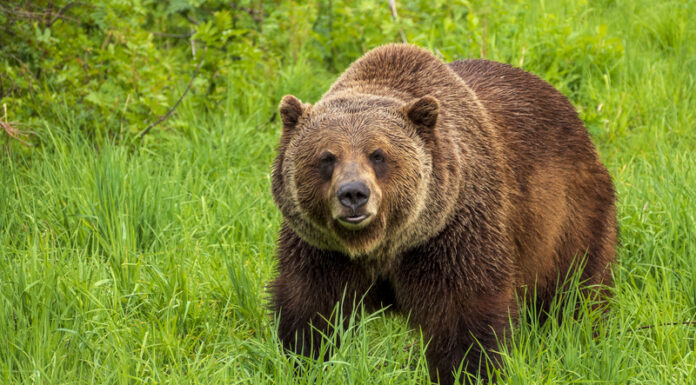On Monday, September 23, 2024, a brown bear wreaked havoc in a secluded village in Russia’s Primorsky region. The event resulted in the deaths of two men and dozens of dogs.
The grim incident unfolded when the bear forced entry into the home of an elderly man, aged 87, and his 56-year-old son, after killing 35 stray dogs in a nearby shelter. This violent episode led to the brutal deaths of the two men, resulting in immediate action from local authorities.
The attack took place in Luchegorsk, a village located near Russia’s southeastern frontier, renowned for its close proximity to wild habitats. The bear, suspected to be suffering from rabies or a significant injury, exhibited increasingly hostile behavior in the days preceding the deadly attack. “A healthy bear would definitely not do this. It would not even come close to a populated area,” stated bear specialist Sergey Aramilev. This abnormal conduct, coupled with the bear’s visible malnourishment, indicated the creature’s severe health issues.
The bear’s violent spree started when it breached the weak wooden barrier of a nearby shelter, where the stray dogs were restrained in cages. Shelter director Olga Zamyshlyaeva detailed the incident: “The bear came in at night, and 35 dogs died. We don’t have security here. The dogs are kept in kennels.” The shelter, situated in a wooded area, was not equipped to fend off such an assault.
After the attack on the dogs, the bear invaded the home of the father and son, who were helpless against the mighty beast. The deceased men showed signs of violent mauling. Hunting inspectors and local law enforcement reacted swiftly, securing the area and imposing a curfew to safeguard residents from potential additional attacks.
After a brief search, the bear was found and euthanized by inspectors. Authorities believe that the animal’s deteriorated health had driven it into a desperate and dangerous state.
Bear attacks are a prevalent issue in Russia, especially in remote and bear-dense regions like Siberia and the Pacific Coast. Russia houses approximately half of the world’s brown bear population, and instances of humans encountering bears have been reported for decades. From 1932 to 2017, over 338 bear attacks on humans were documented, with cases of fatalities and severe injuries reported throughout the nation.
Most of these incidents occur in areas where people gather wild resources or engage in hiking activities, typically during the late summer and fall when bears are preparing for hibernation. Attacks are commonly carried out by solitary bears, rather than females with cubs. While some bears may be conditioned to human food sources, most predatory attacks occur without any signs of bears becoming accustomed to human food.







